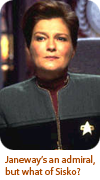The writers over at IO9 recently put together a mega-post of their top 100 sci-fi and fantasy shows of all time. While I agree with many of their selections, the top 10 left something to be desired. They say if you want to build a better mouse trap you had better do it yourself so I’m only too proud to present you with my list. Here is my definitive collection of my 10 all-time favorite science fiction and fantasy television shows. Some of these may very well be your favorites too so I encourage you read on and then post your personal list in the comments below. Engage!
SPOILER WARNING: This post contains both minor and major spoilers for the TV shows discussed. If you don’t want to know key plot points, then you should skip the series you’ve not watched. Now you know and knowing is half the battle.
• • •
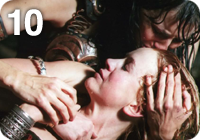
Xena: Warrior Princess
1995 – 2001
When Xena: Warrior Princess first hit the scene in 1995 it seemed like little more than a cheesy ode to the likes of Conan the Barbarian. But as the story lines and the characters evolved, Xena quickly amassed a large fan following. The on-screen chemistry between Lucy Lawless as Xena and Renee O’Connor as Gabrielle was undeniable and the writers took advantage of it whenever possible. The “close” relationship between the lead characters became a rallying cry for gay and lesbian fans of the series and helped boost Xena beyond mere comic book camp. No matter what outlandish villain the duo faced, their strengthening love and loyalty for each other always felt real. Add in some serious amounts of action, on-location cinematography and the show’s ability not to take itself too seriously and you have a fantasy adventure that lands Xena in my number 10 spot.
• • •
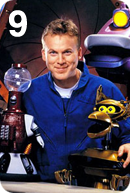
Mystery Science Theater 3000
1988 – 1999
“If you’re wondering how he eats and breathes and other science facts… LA LA LA then repeat to yourself it’s just a show, I should maybe just relax!” Fans of MST3K have no doubt that it’s one of the best television shows ever to grace the airwaves. Granted the science fiction aspect of Mystery Science Theater was simply a vehicle for heckling old cheesy movies, but the hook worked. Each week we’d tune in to see the latest invention exchange followed inevitably by the stinker movie that Joel or Mike & the Bots would be forced to endure.
MST3K always played to the intelligence of its audience and threw out obscure references that only the most hard-core geeks would find funny. I am proud to say I was one of those geeks and so the show never failed to please. Japanese monster movies were always a sure fire winner, but so were the plethora of public service films that MST3K loved to roast. Who can forget A Date with Your Family? Salad needs more butter, mother!
Favorite episodes:
• Invasion U.S.A.
• Space Travelers
• Boggy Creek II: And The Legend Continues
• • •
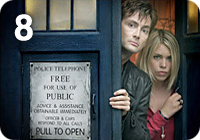
Doctor Who
1963 – Present
Doctor Who holds the distinction of being the longest running science fiction show on television. The British born sensation has been a favorite of mine since I first started watching the series in the Tom Baker years. Through the decades the writers behind Doctor Who have managed to keep audiences coming back for more thanks to the cleverest plot device in sci-fi history – regeneration.
When the character of the Doctor “dies”, his body regenerates into a new form, conveniently played by a new actor. So even though the infamous Daleks, Cybermen and Sontarans may be retreads, how the Doctor deals with them constantly feels fresh. Add in an ever evolving set of traveling companions played by a wide range of actors and you have a creation loved by fans around the world.
Doctor Who occasionally flirts with “monster of the week” syndrome, but more often the writing, acting and stories all form a cohesive whole that is the stuff of science fiction legend.
Favorite episodes:
• Bad Wolf
• School Reunion
• Blink
• • •
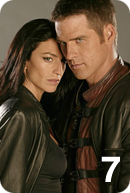
Farscape
1999 – 2003
Although Farscape held obvious similarities to an earlier sci-fi favorite, Buck Rogers, it was ultimately the show’s attention to detail, snappy writing and marvelous aliens that made it such an endearing series. Conceived by Rockne S. O’Bannon and produced by Jim Henson Productions and Hallmark Entertainment, Farscape went out of its way to create characters and aliens the likes of which, no audience had seen before. From the living space ship Moya and her admirable companion, Pilot to the gorgeous blue-skinned Zhaan, Farscape bucked Star Trek’s trend of portraying aliens as humans with “bumpy noses”. The incredible special effects were indeed awesome, but it was frequently the complex relationship and sexual tension between the lead characters of John Crichton and Aeryn Sun that made Farscape one of the greats.
When it was suddenly and unexpectedly cancelled by Sci-Fi Channel CEO Bonnie Hammer in 2003, fans like myself were devastated. Luckily Farscape has survived in various forms beyond its cancellation and continues to be a source for stunningly original story lines and strong female characters.
Favorite episodes:
• Crackers Don’t Matter
• Out of Their Minds
• Revenging Angel
• • •

Futurama
1999 – 2004
If ever there was a television show created by geeks for geeks, Futurama would be it. Futurama was penned by Matt Groening of “The Simpsons” fame and developed for TV by Groening and David X. Cohen. Both men have a huge admiration for science fiction in film and TV and every episode oozes with reverence for those that came before it. Futurama also boasts some of the most versatile voice actors ever to hit the small screen such as Billy West and Lauren Tom. The original animated series is among my all time favorites to watch over and over with quotable lines of dialog and characters that often leave me in stitches. The show is also notable for its frequent celebrity guest appearances such as Al Gore, Stephen Hawking and almost the entire cast of the original Star Trek.
Comedy Central recently announced it is bringing Futurama back from the great beyond with an entire run of all-new episodes. As far as this geek is concerned, it couldn’t have happened to a nicer bunch of animated aliens, robots and disaffected starship captains. Oh my, yes!
Favorite episodes:
• Love’s Labours Lost in Space
• Kif Gets Knocked Up A Notch
• Parasites Lost
• • •
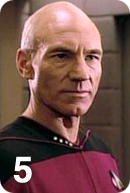
Star Trek: The Next Generation
1987 – 1994
In the late 80’s Star Trek creator, Gene Roddenberry, finally managed to launch his sequel to the original Star Trek. As Gene penned an update to the Trek universe, he cleverly kept the best parts of the original (the struggle to understand humanity, exploration of the unknown, loyalty & morality) and jettisoned the rest. Roddenberry also knew he didn’t want retreads of Captain Kirk, Doctor McCoy or Mr. Spock, but he did want characters that were just as strong and vibrant.
Instead of a youthful man of action, Roddenberry invented Picard, a captain based as much in exploration and intelligence as Kirk was in machismo. The character of Spock was reinvented into that of the android Data, played masterfully by Brent Spiner who should have easily won an Emmy for his work on Next Gen. The design of the Enterprise, the crew’s gadgets and even the look of the bad guys radically changed. While the resulting effort was impressive (especially for Trekkers), the show stumbled for the first two years.
The Next Generation started to hit its stride with the Emmy Award winning season three cliff hanger “The Best of Both Worlds” and really didn’t look back for the rest of its seven year run. By any measure the acting, special effects and stories behind Next Gen were always top notch. Unfortunately the show was saddled by the very element that gave it life – syndication. Since the show’s time slots varied from market to market, producers frowned on having multiple episode story arcs that audiences would have to keep track of from week to week. Instead Paramount pushed Roddenberry for compartmentalized plots that didn’t require continuity or audience loyalty. While Next Gen did occasionally dabble in long-term story development, it wasn’t until its successor, Deep Space Nine came of age, that writers were able to take advantage of season long arcs. The need for Star Trek: The Next Generation to fit neatly into 45 minute stories is what keeps it from being higher on my list of favorites. Everything else about TNG earns the show my number 5 spot.
Favorite episodes:
• The Best of Both Worlds Pt 1 & 2
• Yesterday’s Enterprise
• Data’s Day
• • •
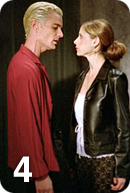
Buffy the Vampire Slayer
1997 – 2003
To say that Joss Weadon, creator of shows like Buffy, Firefly and Dollhouse has a rabid fan base would be an epic and geeky understatement. Weadon’s fictional universes are intricate, compelling and crafted with cauldrons full of love. Such was the case with Buffy the Vampire Slayer which began life as the TV reboot of the failed movie of the same name. Starring Kristy Swanson as Buffy, Joss later admitted none of the film’s characters were what he had envisioned.
What Joss created with the help of Sarah Michelle Gellar and the rest of the WB’s Buffy cast were stories and characters that quickly became a cult hit. Teenagers all over the country easily identified and thrived on the every day problems of these high school students who just happened to live on the Hellmouth. As the show progressed, the relationships that Weadon built between Buffy, Giles, Willow, Xander and the rest gave the Buffyverse a strange sense of familiarity even in the face of utter fantasy and chaos. Like Xena, Buffy was one of the first weekly TV shows to portray a strong, gay main character, that of Willow Rosenburg which reflected America’s growing comfort with such issues being portrayed on national television. Other controversial topics tackled on Buffy included drug addiction, school shootings and even rape, all cleverly framed and discussed within the guise of a fantasy setting.
Those who watched Buffy the Vampire Slayer will often cite it as one of their very favorite shows. Sadly, there are scores of people who won’t go near it simply because they judge the book of Buffy by its cover. To these people I say – give the Slayer a chance. The show was smarter, more poignant and often more entertaining than any police, medical or legal drama it aired against during its entire six year run. Yes, it’s that good.
Favorite episodes:
• Hush
• Once More With Feeling
• Tabula Rasa
• • •
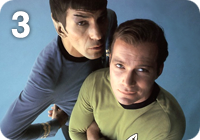
Star Trek (Original)
1966 – 1969
IO9 listed the original Star Trek as their number one scifi show of all time and I can certainly understand why. Back in 1967 audiences had never seen anything like it. The show as dreamt up by Gene Roddenberry, envisioned a future where man had learned to put aside his differences and work together in harmony. The crew of the Starship Enterprise was populated with every facet of the human race and even one very special Vulcan. Lead by the courageous Captain Kirk, Star Trek boldy went where no man had gone before and set the pattern for a billion dollar science fiction franchise in the process.
Many people have tried to articulate what made Star Trek so popular. Some have theorized that at a time when social and political turmoil was at its height, Star Trek’s positive outlook for the future gave audiences something hopeful to grab onto. But for many kids like myself growing up in the 70’s and seeing Star Trek in syndication, it was always about the relationship between the three friends – Kirk, Spock and McCoy, that made Star Trek such a childhood favorite. As a kid I could never stand the episodes where Kirk and Spock, either via alien influence or shared misunderstanding, were pitted against each other. My favorites were always the stories that allowed Kirk and Spock to team up and solve problems, be they alien, moral or spiritual, together.
By any of today’s television standards, the original Star Trek seems quaint. The show’s effects have been remastered, and the acting is often over the top, but the appeal of the characters and the strength of the underlying stories are undeniable. If they weren’t, Kirk, Spock, Sulu, Scotty and company would never have evolved to become the pop culture icons they are today. The show gave all of its fans hope for the future, inspired generations of youngsters to become doctors, scientists and engineers and preached concepts of tolerance and diversity. Not bad for what Gene Roddenberry once pitched to NBC simply as “Wagon Train to the stars.”
Favorite episodes:
• The Ultimate Computer
• City on the Edge of Forever
• The Doomsday Machine
• • •
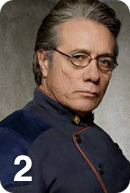
Battlestar Galactica (New)
2003 – 2009
If Ron Moore’s re-imagined Battlestar Galactica had remained as strong throughout its entire run as it was in its first two seasons, the show would have easily been my number one choice. When it aired in 2003, BSG was met with a firestorm of criticism from fans of the original series for everything from cylons looking like humans to Boomer and Starbuck’s portrayal by women. Moore wisely ignored the critics and forged ahead with his gritty vision to bring us the story of the destruction of the Twelve Colonies at the hands of the merciless robot Cylons.
The show immediately delved into political and sociological intrigue as it gave us some of the most realistic characters ever to be written for a science fiction series. From the honorable Adama who struggles to lead his fleet to Earth, and Laura Roslin, the school teacher who has the weight of humanity thrust upon her, to the heroic Starbuck and conniving Gaius Baltar, Galactica is replete with classic archetypes. The show moved at lightening pace and wove themes of religion, genocide, sexuality and redemption with the skill of a master tailor.
The failure of Battlestar Galactica is one that often hits series riding high on a wave of popularity – it failed to adequately plan for its final destination. As the third and fourth season progressed, it seemed clear that Moore didn’t have a clear plan about where he wanted to take his characters. The show spent years building up questions fans were dying to have answered in solid, satisfying ways. Instead the audience had to deal with multiple “plot dumps” as well as characters like Starbuck and Cavil morphing to become shadows of their former selves. The writers concentrated story lines around discovering “The Final Five” and gradually turned the dreaded cylons into humanity’s tenuous allies.
Battlestar Galactica was at its best when action was high, characters were true to themselves and humanity’s survival was hanging by a thread. There were enough of these moments to push BSG all the way up to my second favorite sci-fi show of all time. If the final season of Galactica had been even 1/4 as strong as the first, I dare say it might have gone down as one of television’s best dramas. Instead it stands as an impressive example of how a talented writer can rework a strong, original concept and turn it into a compelling, epic story for our generation.
Favorite episodes:
• 33
• The Hand of God
• Exodus Pt 1 & 2
• • •
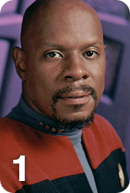
Star Trek: Deep Space Nine
1993 – 1999
So here we are at my favorite sci-fi and fantasy show. Deep Space Nine holds this special place in my geeky heart for many reasons, some of which I’ve written about before both here and at the Sci-Fi Cast. Putting aside the top notch acting from Avery Brooks, Andrew Robinson, Nana Visitor, Rene Auberjonois, Armin Shimerman and the rest, Deep Space Nine dared to do things other scifi series, especially Star Trek, didn’t.
Also, unlike Battlestar Galactica which started out hitting on all cylinders, it took several years for DS9 to find its footing. Although looking back now, you never would have realized this because DS9 was an immediate hit with fans and critics alike. The show was nominated for Emmy Awards every year of its run in makeup, cinematography, art direction, special effects, hairstyling, music (direction and composition), and costumes. In 1999 Deep Space Nine was rated the #1 syndicated show in America. The cast was even featured on the cover of TV Guide a total of ten times during it’s seven year run. Not bad for a show that constantly struggled to emerge from the shadow of the Next Generation. Despite its success, looking back on the series now it is easy to spot how the writers struggled to find voices for Odo, Quark and even Sisko at the show’s outset. It wasn’t until Ron Moore joined the production in season three as a supervising producer that the show’s direction started to solidify.
From the show’s conception the writers had dared to mix a volatile topic like religion into the heart of Deep Space Nine. But as the seasons progressed, Sisko’s struggle to reconcile his position as a Starfleet captain with that of Bajor’s most important religious figure, the Emissary of the Prophets, provided the fuel for propelling his character forward. The continuing theme of the occupation of Bajor by the Cardassians not only gave the actors solid material, but it also stayed true to Roddenberry’s vision of Trek’s “mini morality plays”. The chemistry between DS9 duos Kira & Dukat and Garack & Bashir were a delight to behold week after week and kept the audience wanting more. Deep Space Nine also allowed Star Trek fans to get a peek at married life through the union of Worf and Dax, a highlight of seasons 5 & 6.
Finally, as Deep Space Nine’s run neared completion, the ever-worsening threat of the war with The Dominion proved to be a spring board for story after incredible story. It provided the ammunition the writers needed to to push the envelope with multiple episode arcs and skillfully allowed for the construction of dramatic plot points over the final four seasons. Unlike BSG which went out with a whimper, Deep Space Nine’s final season was a roller coaster ride peppered with humor, awesome character development and satisfying, emotional resolutions to long established plot points and questions.
Deep Space Nine is my favorite sci-fi show because it took all the best parts of Star Trek and combined them with all the best parts of a yet-to-be-written BSG. It wove these aspects together with incredible acting, masterful special effects, skillful storytelling and a respect for its audience. I’ve watched all seven seasons of DS9 at least five times and it keeps getting better every time I revisit it. The same cannot be said for Next Generation, the original Star Trek or even Battlestar Galactica and that’s why Sisko and company is at the top of my TV heap.
Favorite episodes:
• In the Pale Moonlight
• The Sacrifice of Angels
• Trials and Tribulations
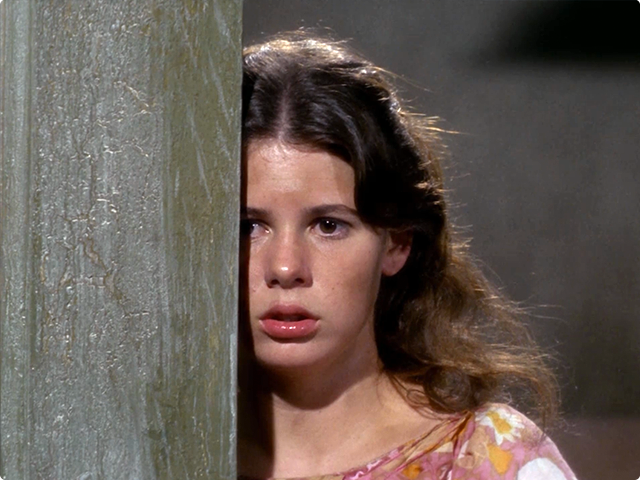
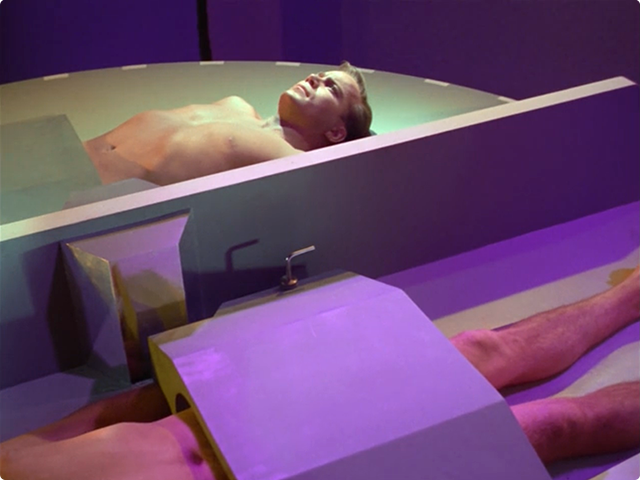


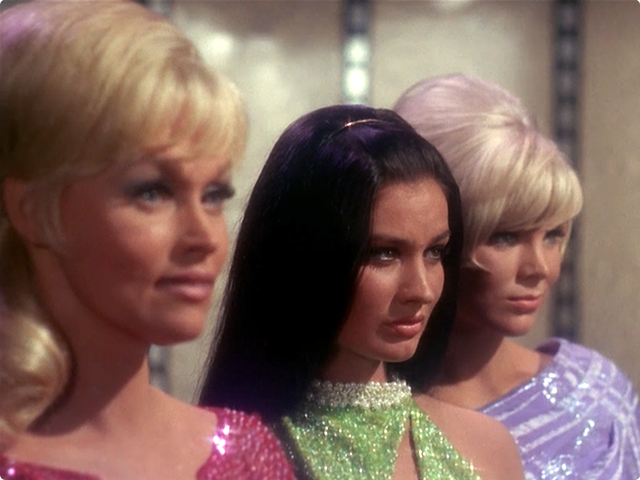
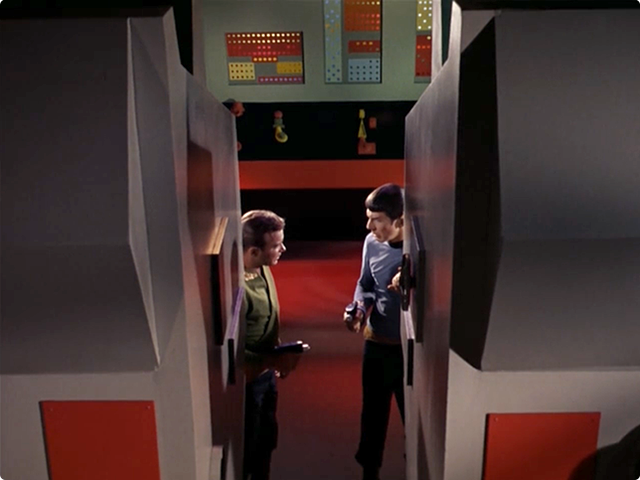
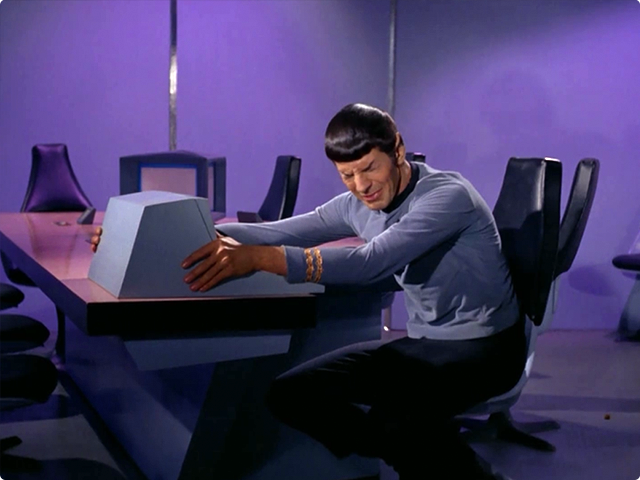
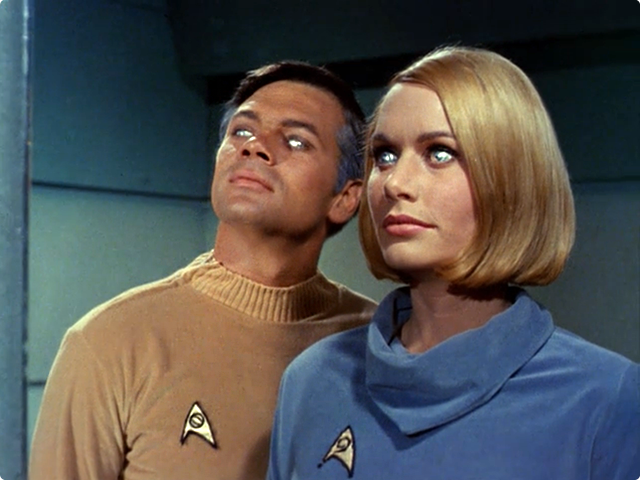


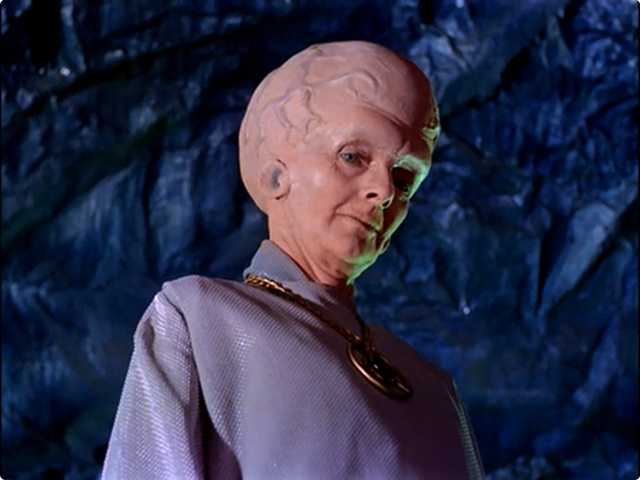


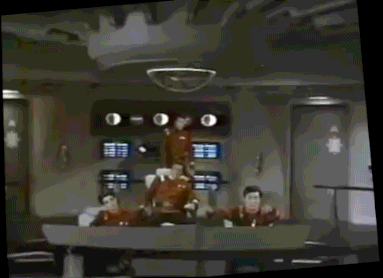



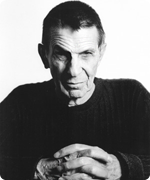 If you’re a fan of Star Trek and CBS’s geeky comedy
If you’re a fan of Star Trek and CBS’s geeky comedy 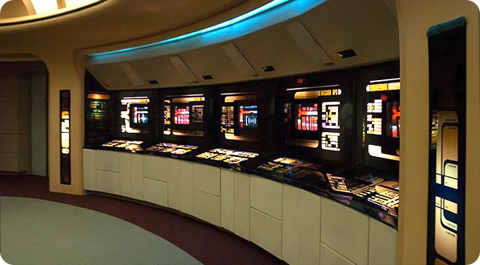
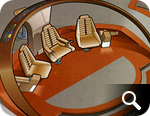
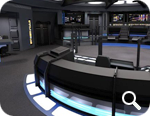












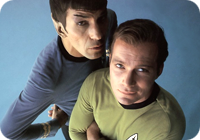 After my recent
After my recent 


